丙烯醛-2,4-二硝基苯腙,Acrolein-2,4-dinitrophenylhydrazone,分析标准品,99%
产品编号:西域质检-72299| CAS NO:888-54-0| MDL NO:MFCD00191599| 分子式:C9H8N4O4| 分子量:236.18
本网站销售的所有产品仅用于工业应用或者科学研究等非医疗目的,不可用于人类或动物的临床诊断或者治疗,非药用,非食用,
丙烯醛-2,4-二硝基苯腙
丙烯醛2,4-二硝基苯腙
This certificate is designed in accordance with ISO 17034 and ISO Guide 31. This reference material (RM) was designed,produced and verified in accordance with ISO/IEC 17025, ISO 17034 and a registered quality management system ISO 9001.
(固体)_____
冷冻(-18±5)℃,避光

The certified value(s) and uncertainty(ies) are determined in accordance with ISO 17034 with an 95% confidence level(k=2). Uncertainty is based on the Total Combined Uncertainty, including uncertainties of characterisation, homogeneity and stability testing. Stability values are based on real evidence opposed to simulation.
The balances used for gravimetric measurements are calibrated with weights traceable to the national standards. The calibration of the balances is verified annually by an external accredited calibration service. This analysis method has been verified using an approach consistent with ISO 17034:2016 & ISO 17025:2017.
| CERTIFICATE ON | QC SIGNATURE | |
| - |  | RM Release |
qNMR
This RM is intended for use in a laboratory as a calibration and quality control standard or in method development for analytical techniques.
This reference material meets the specification stated in this certificate until the expiry date, provided it is stored unopened at the recommended temperature here in. If storage after opening is necessary, the RM should be tightly closed and kept from light and moisture.
Read Material Safety Data Sheet (MSDS) and understand any potential hazard(s) prior to the use of this product. All chemicals should be considered potentially hazardous in nature and should only be handled by qualified personnel using established good laboratory practices.
Random replicate samples of the final packaged RM have been analysed to prove homogeneity compliant with ISO 17034.
It is recommended to use 1 mg as the minimum sample size and if less material is used, to increase the certified uncertainty by a factor of two for half sample and four for a quarter of sample.Visit the support section of our website technology videos and frequently asked questions.
相关文档
化学品安全说明书(MSDS)
下载MSDS质检证书(COA)
相关产品
| 符号 |
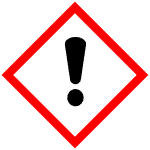
GHS07 |
|---|---|
| 信号词 | Warning |
| 危害声明 | H315-H319-H335 |
| 警示性声明 | P261-P305 + P351 + P338 |
| 个人防护装备 | dust mask type N95 (US);Eyeshields;Gloves |
| 危害码 (欧洲) | Xi,Xn,F |
| 风险声明 (欧洲) | 36/37/38-36-20/21/22-11 |
| 安全声明 (欧洲) | 26-36/37-16 |
| 危险品运输编码 | UN 1648 3/PG 2 |
| 包装等级 | III |
| 海关编码 | 2928000090 |
|
Acrolein 2,4-Dinitrophenylhydrazone
Revision number: 6
SAFETY DATA SHEET Section1. IDENTIFICATION Product name:Acrolein 2,4-Dinitrophenylhydrazone Revision number:6 Section2. HAZARDS IDENTIFICATION GHS classification PHYSICAL HAZARDS Category 2 Flammable solids HEALTH HAZARDS Category 2 Skin corrosion/irritation Serious eye damage/eye irritationCategory 2A Not classified ENVIRONMENTAL HAZARDS GHS label elements, including precautionary statements Pictograms or hazard symbols Signal wordWarning Hazard statementsFlammable solid Causes skin irritation Causes serious eye irritation Precautionary statements: Keep away from heat/sparks/open flames/hot surfaces. - No smoking. [Prevention] Use explosion-proof electrical/ventilating/lighting equipment. Wash hands thoroughly after handling. Wear protective gloves/eye protection/face protection. IF IN EYES: Rinse cautiously with water for several minutes. Remove contact lenses, [Response] if present and easy to do. Continue rinsing. If eye irritation persists: Get medical advice/attention. IF ON SKIN: Gently wash with plenty of soap and water. If skin irritation occurs: Get medical advice/attention. Take off contaminated clothing and wash before reuse. Section3. COMPOSITION/INFORMATION ON INGREDIENTS Substance/mixture:Substance Components:Acrolein 2,4-Dinitrophenylhydrazone Percent:>98.0%(HPLC)(T) 888-54-0 CAS Number: Synonyms:2-Propenal 2,4-Dinitrophenylhydrazone Chemical Formula:C9H8N4O4 Acrolein 2,4-Dinitrophenylhydrazone Section4. FIRST AID MEASURES Inhalation:Remove victim to fresh air and keep at rest in a position comfortable for breathing. Get medical advice/attention if you feel unwell. Skin contact:Remove/Take off immediately all contaminated clothing. Gently wash with plenty of soap and water. If skin irritation or rash occurs: Get medical advice/attention. Eye contact:Rinse cautiously with water for several minutes. Remove contact lenses, if present and easy to do. Continue rinsing. If eye irritation persists: Get medical advice/attention. Ingestion:Get medical advice/attention if you feel unwell. Rinse mouth. A rescuer should wear personal protective equipment, such as rubber gloves and air- Protection of first-aiders: tight goggles. Section5. FIRE-FIGHTING MEASURES Suitable extinguishingDry chemical, foam, water spray, carbon dioxide. media: Specific hazards arising Explosion risk in case of fire. Fight fire remotely due to the risk of explosion. from the chemical:Take care as it may decompose upon combustion or in high temperatures to generate poisonous fume. Precautions for firefighters: Fire-extinguishing work is done from the windward and the suitable fire-extinguishing method according to the surrounding situation is used. Uninvolved persons should evacuate to a safe place. In case of fire in the surroundings: Keep containers cool by spraying with water. Eliminate all ignition sources if safe to do so. Special protectiveWhen extinguishing fire, be sure to wear personal protective equipment. equipment for firefighters: Section6. ACCIDENTAL RELEASE MEASURES Use personal protective equipment. Keep people away from and upwind of spill/leak. Personal precautions, protective equipment and Entry to non-involved personnel should be controlled around the leakage area by emergency procedures: roping off, etc. Environmental precautions: Prevent product from entering drains. Methods and materials for Sweep dust to collect it into an airtight container, taking care not to disperse it. containment and cleaning Adhered or collected material should be promptly disposed of, in accordance with up: appropriate laws and regulations. Prevention of secondary Remove all sources of ignition. Fire-extinguishing devices should be prepared in hazards:case of a fire. Use spark-proof tools and explosion-proof equipment. Section7. HANDLING AND STORAGE Precautions for safe handling Technical measures:Handling is performed in a well ventilated place. Wear suitable protective equipment. Be careful not to cause leakage, overflow, or dispersion. Steam should not be generated unnecessarily. Keep away from heat/sparks/open flame/hot surfaces. -No smoking. Take measures to prevent the build up of electrostatic charge. Use explosion-proof equipment. Avoid shock and friction. Wash hands and face before breaks and immediately after handling the product. Use a local exhaust if dust or aerosol will be generated. Advice on safe handling: Avoid contact with skin, eyes and clothing. Conditions for safe storage, including any incompatibilities Storage conditions:Keep container tightly closed. Store in a cool and dark place. Be sure not to give the container unexpected impacts, such as falling down or falling off. Store away from incompatible materials such as oxidizing agents. Packaging material:Comply with laws. Section8. EXPOSURE CONTROLS / PERSONAL PROTECTION Engineering controls:Install a closed system or local exhaust. Also install safety shower and eye bath. Personal protective equipment Acrolein 2,4-Dinitrophenylhydrazone Section8. EXPOSURE CONTROLS / PERSONAL PROTECTION Respiratory protection: Dust respirator. Follow local and national regulations. Hand protection:Protective gloves. Eye protection:Safety glasses. A face-shield, if the situation requires. Skin and body protection: Protective clothing. Protective boots, if the situation requires. Section9. PHYSICAL AND CHEMICAL PROPERTIES Physical state (20°C):Solid Form:Crystal- Powder Colour:Yellow - Yellow red Odour:No data available pH: No data available Melting point/freezing point:165°C Boiling point/range:No data available Flash point:No data available Flammability or explosive limits: Lower:No data available Upper:No data available Relative density:No data available Solubility(ies): [Water]No data available [Other solvents]No data available Section10. STABILITY AND REACTIVITY Chemical stability:Stable under proper conditions. Possibility of hazardous May explosively decompose on heating, shock, friction, etc. reactions: Heat, Spark, Open flame, Static discharge, Shock, Friction Conditions to avoid: Incompatible materials: Oxidizing agents Hazardous decomposition Carbon monoxide, Carbon dioxide, Nitrogen oxides (NOx) products: Section11. TOXICOLOGICAL INFORMATION Acute Toxicity:No data available Skin corrosion/irritation: No data available Serious eyeNo data available damage/irritation: Germ cell mutagenicity: No data available Carcinogenicity: IARC =No data available NTP =No data available Reproductive toxicity:No data available Section12. ECOLOGICAL INFORMATION Ecotoxicity: Fish:No data available No data available Crustacea: Algae:No data available Persistence / degradability: No data available BioaccumulativeNo data available potential(BCF): Mobility in soil No data available Log Pow: Soil adsorption (Koc):No data available No data available Henry's Law constant(PaM3/mol): Acrolein 2,4-Dinitrophenylhydrazone Section13. DISPOSAL CONSIDERATIONS Recycle to process, if possible. Consult your local regional authorities and an expert of disposal. You may be able to dissolve or mix material with a combustible solvent and little by little burn in a chemical incinerator equipped with an afterburner and scrubber system. If a large amount of the substance is burned at a time, an explosion may occur. Observe all federal, state and local regulations when disposing of the substance. Section14. TRANSPORT INFORMATION Hazards Class:4.1: Flammable solid. 1325 UN-No: Proper shipping name:Flammable solid, organic, n.o.s. III Packing group: Section15. REGULATORY INFORMATION Safe management ordinance of dangerous chemical product (State Council announces on January 26, 2002 and revised on February 16,2011): Safe use and production, the storage of a dangerous chemical, transport, loading and unloading were prescribed. SECTION 16 - ADDITIONAL INFORMATION N/A |
|
~% 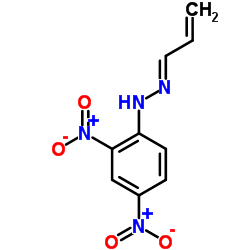
888-54-0 |
| 文献:Journal of the American Chemical Society, , vol. 73, p. 5282,5284 |
|
~% 
888-54-0 |
| 文献:Journal of Organic Chemistry, , vol. 27, p. 1238 - 1240 |
|
~% 
888-54-0 |
| 文献:Journal of Organic Chemistry USSR (English Translation), , vol. 17, p. 1914 - 1918 Zhurnal Organicheskoi Khimii, , vol. 17, # 10 p. 2148 - 2152 |
|
~%
详细
|
| 文献:Journal of Organic Chemistry USSR (English Translation), , vol. 22, # 9 p. 1771 - 1774 Zhurnal Organicheskoi Khimii, , vol. 22, # 9 p. 1972 - 1975 |
|
~% 
888-54-0 |
| 文献:Collection of Czechoslovak Chemical Communications, , vol. 45, # 4 p. 1173 - 1181 |
|
~% 
888-54-0 |
| 文献:Zhurnal Organicheskoi Khimii, , vol. 5, p. 1932 - 1937,1879 - 1883 |
|
~%
详细
|
| 文献:Journal of the American Chemical Society, , vol. 73, p. 5282,5284 |
|
~%
详细
|
| 文献:Journal of the Chemical Society, , p. 490,496 |
| 上游产品 7 | |
|---|---|
| 下游产品 0 | |

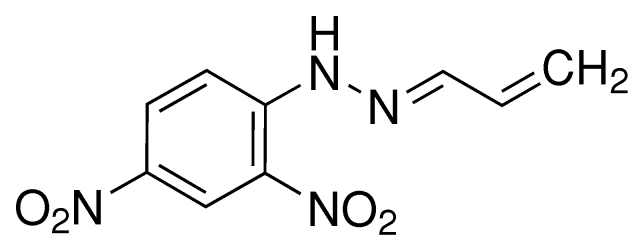
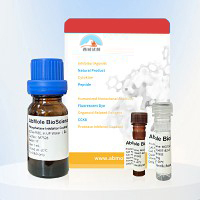
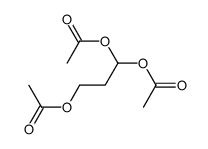
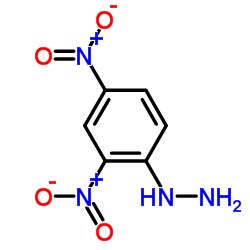
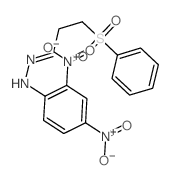
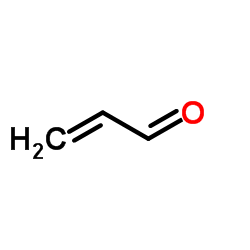

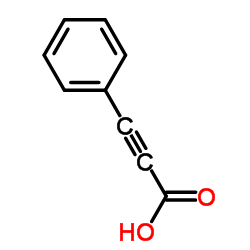

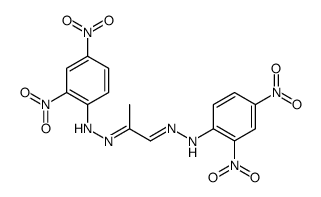
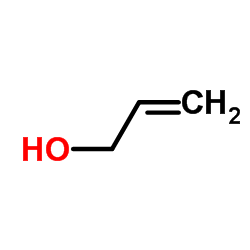

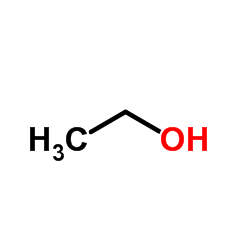

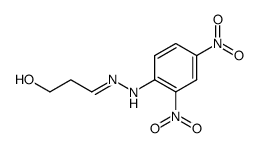





 浙公网安备 33010802013016号
浙公网安备 33010802013016号